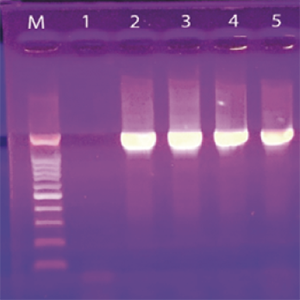Infestation of Apis mellifera workers and larvae with Varroa destructor affects gut bacterial diversity

Accepted: 1 February 2022
HTML: 19
All claims expressed in this article are solely those of the authors and do not necessarily represent those of their affiliated organizations, or those of the publisher, the editors and the reviewers. Any product that may be evaluated in this article or claim that may be made by its manufacturer is not guaranteed or endorsed by the publisher.
Authors
The present work aims to investigate the midgut bacteria of honey bee (Apis mellifera lamarckii) workers and larvae infested with Varroa destructor. To achieve this task, uninfested and infested honey bee larvae and workers with the parasitic mites were obtained from natural bees apiaries in Qaliubiya Governorate, Egypt. Aerobic bacteria were isolated from the midgut of uninfested and infested A. mellifera on nutrient agar medium and identified using a culture-dependent isolation along with 16S rRNA sequences. The results revealed that both uninfested and V. destructor infested workers and larvae harbored gut bacteria belonging to Gamma-proteobacteria strains. The uninfested workers contained Enterobacter cloacae and Serratia nematodiphila, while V. destructor infested workers harbored Enterobacter species. Uninfested larvae contained E. hormaechei and Klebsiella variicola. V. destructor infested larvae harbored K. oxytoca as a result of infection. We concluded that the honeybee microbiome composition is likely to be impacted through isolates variation by stage and diversity disruption of isolates by V. destructor infection.
How to Cite

This work is licensed under a Creative Commons Attribution-NonCommercial 4.0 International License.
PAGEPress has chosen to apply the Creative Commons Attribution NonCommercial 4.0 International License (CC BY-NC 4.0) to all manuscripts to be published.

 https://doi.org/10.4081/jear.2022.10316
https://doi.org/10.4081/jear.2022.10316



